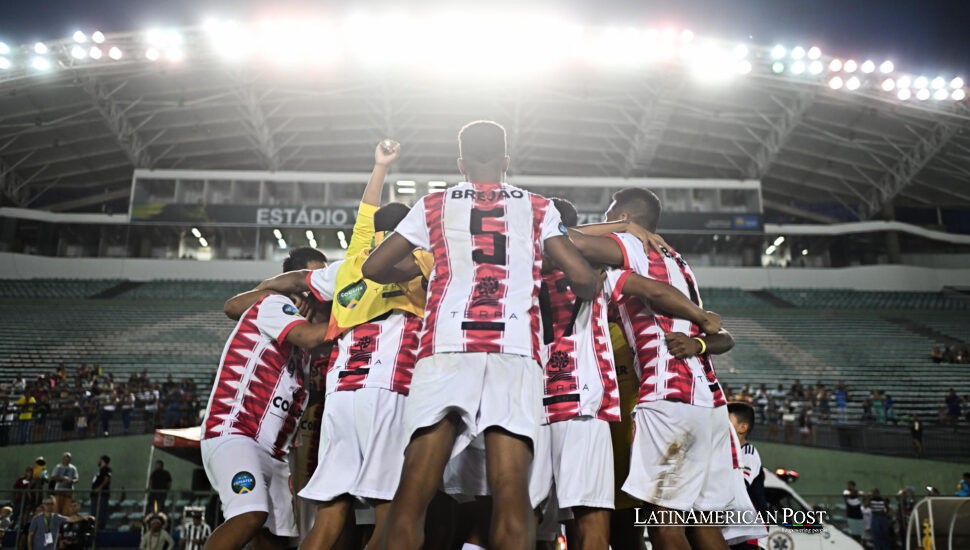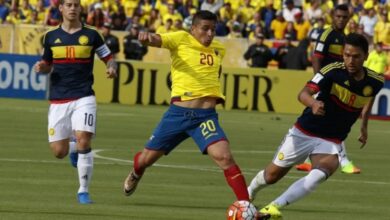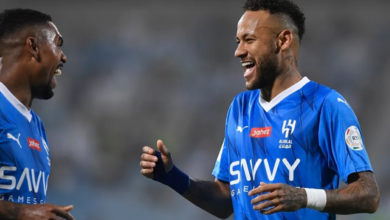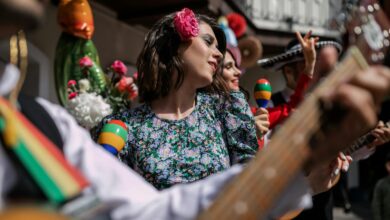Brazil’s Indigenous Football Championship Unleashes Pride Under Vast Skies

Capturing the passionate spirit of Brazil’s indigenous communities, the first National Indigenous Football Championship concluded in Brasilia, unveiling a monumental celebration of culture, resilience, and athletic prowess—truly demonstrating how the beautiful game transcends boundaries to unify diverse ancestral voices worldwide.
The Road to the Final
Brazil’s capital city, Brasilia, witnessed a vibrant convergence of culture and competition this past weekend as Estádio Bezerrão hosted the grand finale of the inaugural National Indigenous Football Championship. The tournament sought to highlight difficulties faced by indigenous groups in Brazil. It is also intended to promote their request for territorial boundaries. The event outcome shifted its nature. It became a valuable occasion. Ribeiro directed this work. He aimed to show that the event was more important than a sports contest. This gathering helped people see historical backgrounds. It built a sense of agreement between native people around the country.
Envisioned just two years ago, the seeds of this championship were sown during the Indigenous Games held in the Caramuru village of Bahia. Observers were struck by solidarity among teams and their broader communities, all fueled by the unifying spirit of competition. Inspired by that spectacle, organizers decided to shape a grand national event that would bring together hundreds of athletes under one banner.
To ensure truly nationwide representation, five distinct qualifying stages were held—each corresponding to one of Brazil’s major regions: Northeast, Southeast, South, Center-West, and North. A total of 92 teams comprising over 2,700 players advanced from these fiercely contested regional rounds to demonstrate their skills on the largest stage. The teams brought their indigenous heritage’s pride while representing the dreams of thousands of community members who longed to see their cultures featured in a national forum.
The first to seize a spot in the final were the Pataxó of Coroa Vermelha, hailing from southern Bahia, who had clinched the Northeast Championship. Hot on their heels came the Pataxó Imbiruçu from Minas Gerais, a united force that proved their mettle in the Southeast bracket. The Terra Indígena de Ivaí from Paraná dominated the South, while Brejão de Nioaque of Mato Grosso do Sul captured the Center-West. The last to qualify were the Hunikuin people from northern Brazil, whose journey to the final stages was marked by endurance and unwavering determination, reflecting the powerful spirit of their ancestral heritage.
Championing Indigenous Voices
Though the fiery tournament matches took center stage, the broader goal was always about highlighting Indigenous concerns. For many centuries, Brazil’s indigenous communities have fought to preserve their customs and maintain the rightful claims to their lands. From early colonial times to the modern era, these communities have faced exploitation, displacement, and, at times, deadly violence. Yet their traditions endure, from language and ritual to an age-old relationship with the land itself.
The championship brought together teams from the Amazon, Cerrado savanna, and Atlantic Forest regions to elevate unique stories that together illustrate Brazil’s indigenous cultural heritage. Banners in the stadium showed messages about land rights. These also mentioned the value of protecting native traditions for future people. Local craftspeople used their work to share narratives. They created detailed beadwork and carved wood items, in addition to vibrant artwork. The halftime performance featured old songs besides dances. It presented viewers with religious habits that continued across time.
Modern elements of the event flowed effortlessly into the traditional cultural celebration. Organizers worked with healthcare experts to give indigenous families free access to ophthalmology, dentistry, and physiotherapy services because these communities face barriers to medical care. The championship became a comprehensive platform that uplifted marginalized voices through its unique combination of sports activities with cultural elements and practical assistance.
Historical Legacy and the Future
During the late 1800s, football was introduced to Brazil through British-inspired clubs and key figures, including Charles Miller. Brazil’s population adopted football over time and turned it into a worldwide spectacle known for creating legends like Pelé, Garrincha, and Marta. Indigenous people continued to be excluded from leading football clubs and significant national debates throughout most of Brazilian history. Tournaments like this one hold the promise of rewriting that narrative. By showcasing raw talent from remote villages, the championship not only entertains spectators but also paves the way for aspiring players to dream beyond boundaries once deemed unbreakable.
The final match on Sunday provided a culmination worthy of the hype. Brejão de Nioaque from Mato Grosso do Sul prevailed over Terra Indígena de Ivaí from Paraná with a 3–1 victory. This electrifying showdown marked the crowning of the first champion of the National Indigenous Football League, sending their community into jubilant celebrations. As a reward for their triumph, they received 60,000 reals (approximately 10,200 dollars or 9,000 euros) and the trophy named “Galdino Pataxó,” honoring Galdino Jesus dos Santos, a Pataxó community leader brutally murdered in Brasilia in 1997. His story serves as a harsh reminder of the injustices faced by Indigenous people both in the past and present, which highlights the necessity of continued advocacy and reconciliation work.
The stadium became the central gathering place for community expression during Sunday’s festivities. The beauty of indigenous traditions was showcased through live performances that featured songs in multiple indigenous languages alongside dancers who performed choreographed patterns that honored tribal spirits. The cheering crowd dressed in colorful attire and face paint united supporters from all walks of life with each sportive achievement. People from far-off villages had an opportunity to meet family members from other places during the weekend. They could form new friendships and make current family relationships stronger.
This competition shows a shift in how Brazil views its indigenous people. Brazilians understand the cultural value of these native groups in the country. The final whistle at Estádio Bezerrão finished the soccer competition. It is called for togetherness and respect. The mix of sports wins and old customs lets people get involved, and viewers show honor for the strength of Indigenous people.
Organizers have started working on upcoming editions of the championship with intentions to expand its influence and accessibility. Organizers are considering creating stronger youth divisions while actively pursuing sponsorship opportunities and establishing intensive partnerships with government agencies to ensure the tournaments deliver extended educational, healthcare, and economic benefits. The combination of sport and advocacy has successfully inspired nationwide participation in preserving and recognizing Brazil’s historical and diverse cultural identities.
Also Read: Three Hidden Truths Revealed in Argentina During Maradona’s Ongoing Death Trial
The powerful resonance of chants and cheers from the crowd remained in the atmosphere as darkness fell on Brasilia and spectators began to leave. This championship was a sports competition for many indigenous athletes. It showed their communities’ worth and skills. Brazil strengthened its reputation as a strong football nation. Brazil acknowledged its power to honor and protect its vast cultural heritage.




